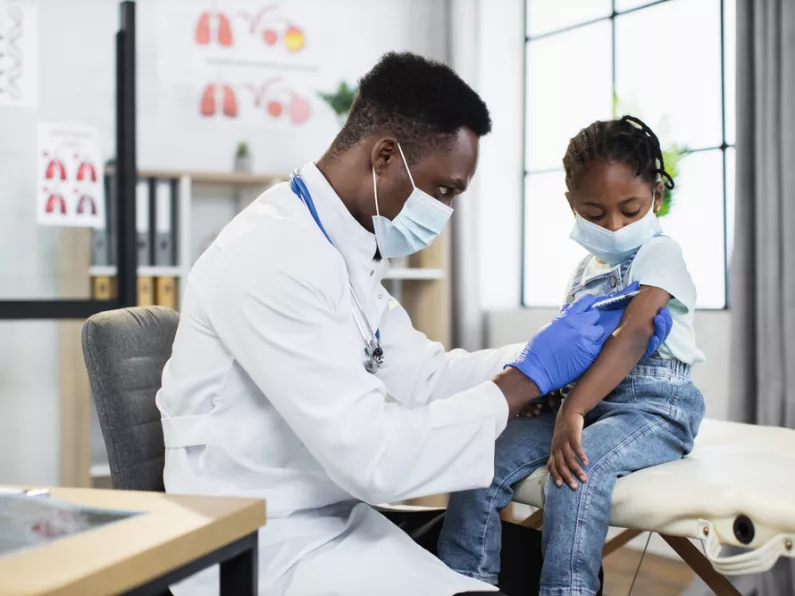Parents are starting to immunize their kids again after a dangerous drop caused by the Covid-19 pandemic.
Global immunization services reached 4 million more children in 2022 compared to the previous year, as countries stepped up efforts to address the historic backsliding caused by the pandemic.
According to data published today by the World Health Organization (WHO) and UNICEF, 20.5 million children missed out on one or more vaccines delivered through routine immunization services in 2022.
This is compared to 24.4 million children in 2021.
In spite of this improvement, the number remains higher than the 18.4 million children who missed out in 2019 before pandemic-related disruptions, underscoring the need for ongoing catch-up, recovery and system strengthening efforts.
The vaccine against diphtheria, tetanus and pertussis (DTP) is used as the global marker for immunization coverage.
Of the 20.5 million children who missed out on one or more doses of their DTP vaccines in 2022, 14.3 million did not receive a single dose.
The figure represents an improvement from the 18.1 million zero-dose children in 2021, but remains higher than the 12.9 million children in 2019.
Parents are starting to immunize their kids again
“These data are encouraging, and a tribute to those who have worked so hard to restore life-saving immunization services after two years of sustained decline in immunization coverage,” said Dr Tedros Adhanom Ghebreyesus, WHO Director-General.
“But global and regional averages don’t tell the whole story and mask severe and persistent inequities. When countries and regions lag, children pay the price.”
The early stages of recovery in global immunization have not occurred equally, with the improvement concentrated in a few countries.
Progress in well-resourced countries with large infant populations, such as India and Indonesia, masks slower recovery or even continued declines in most low-income countries, especially for measles vaccination.
Of the 73 countries that recorded substantial declines in coverage during the pandemic, 15 recovered to pre-pandemic levels and 24 are en route to recovery.
But, most concerningly, 34 have stagnated or continued declining.
These concerning trends echo patterns seen in other health metrics.
Strengthening efforts
Countries must ensure they are accelerating catch-up, recovery, and strengthening efforts to reach every child with the vaccines they need and, because routine immunization is a fundamental pillar of primary healthcare, take the opportunity to make progress in other related health sectors.
Vaccination against measles - one of the most infectious pathogens - has not recovered as well as other vaccines, putting an additional 35.2 million children at risk of measles infection.
First dose measles coverage increased to 83% in 2022 from 81% in 2021 but remained lower than the 86% achieved in 2019.
As a result, 21.9 million children missed the routine measles vaccination in their first year of life in 2022.
This was 2.7 million more than in 2019, while an additional 13.3 million did not receive their second dose, placing children in under-vaccinated communities at risk of outbreaks.
“Beneath the positive trend lies a grave warning,” said UNICEF Executive Director Catherine Russell.
“Until more countries mend the gaps in routine immunization coverage, children everywhere will remain at risk of contracting and dying from diseases we can prevent.
"Viruses like measles do not recognize borders. Efforts must urgently be strengthened to catch up children who missed their vaccination, while restoring and further improving immunization services from pre-pandemic levels.”
Longstanding declines
Countries with steady, sustained coverage in the years before the pandemic have been better able to stabilise immunization services since, the data indicates.
For example, South Asia, which reported gradual, ongoing increases in coverage in the decade prior to the pandemic, has demonstrated a more rapid and robust recovery than regions that suffered longstanding declines, such as Latin America and the Caribbean.
For the first time, HPV vaccination coverage surpassed pre-pandemic levels.
HPV vaccination programmes that began pre-pandemic reached the same number of girls in 2022 than 2019.
However, coverage in 2019 was well below the 90% target, and this has remained true in 2022.









